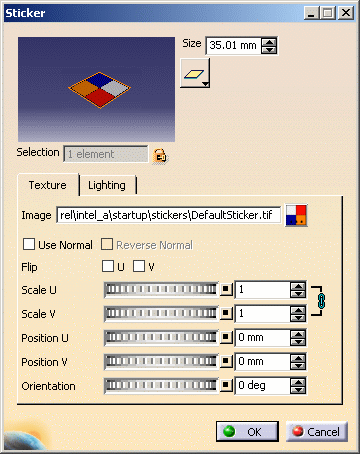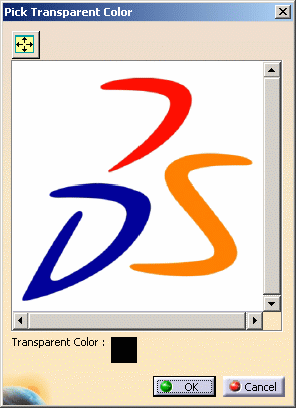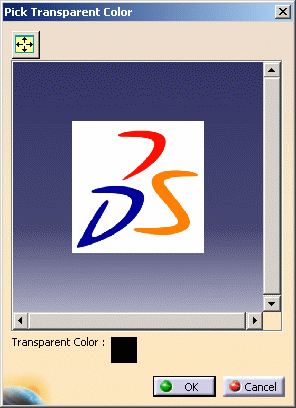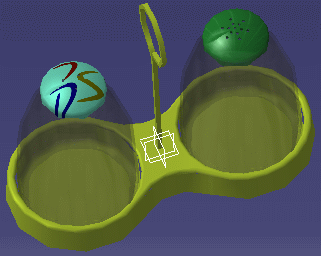This task explains how to modify the sticker properties such as the lighting or the projected image, for instance.
-
Right-click the sticker in the specification tree then select Properties (or press Alt+Enter).
-
If you want to define a texture image for the sticker, click the ... button to open the File Selection dialog box.
The supported image formats are:
-
.bmp
-
.rgb
-
.jpg
-
.tif (this format supports transparency so that you can see the underlying stickers and geometry in the transparent areas of your image).
-
-
Navigate to the image you wish to apply then click Open.
-
Click OK to validate your new parameters.
More about stickers
Stickers are identified by three different symbols in the specification tree:
-
 for a sticker that is applied onto geometry and for which a texture image
has been defined
for a sticker that is applied onto geometry and for which a texture image
has been defined  for a sticker that is not applied onto geometry (typically, when you
select the Sticker command without having previously selected
the element onto which the sticker should be applied)
for a sticker that is not applied onto geometry (typically, when you
select the Sticker command without having previously selected
the element onto which the sticker should be applied) for a sticker that is applied onto geometry but for which no texture
image has been defined.
for a sticker that is applied onto geometry but for which no texture
image has been defined.- The transparency parameter used for stickers is the standard transparency parameter used throughout CATIA V5 products. Therefore, the stickers present the same limitations in terms of transparency as any other CATIA products. For more detailed information about transparency limitations, refer to the Customizing Section - Performance task in the CATIA Infrastructure User's Guide.




